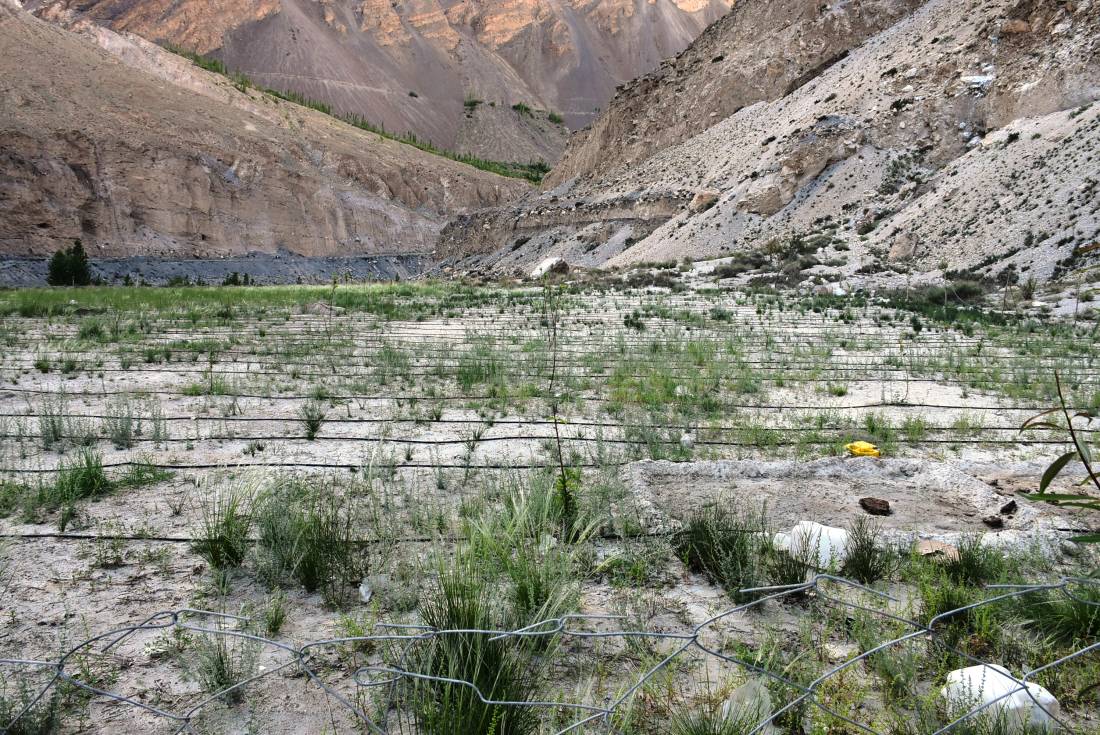Pakistan’s Barren Mountains Turned Green By Zero-Carbon Water Pumps
Gojal Valley: Shovel in hand, Naila Shah regularly walks two miles from her home to a newly planted apple orchard, high in the mountains of Khyber village in northern Pakistan. Only two years ago, it would have been practically impossible to grow apples in this part of Pakistan, 2,500 meters (8,200 feet) up in Gilgit-Baltistan region’s Gojal Valley. Although the Khunjerab River provides plenty of water to those living in the valleys below, local farmers used to have no efficient way to get it up the mountain-sides. But the installation of a hydraulic ram (hydro-ram) pump has changed that. It harnesses the pressure of fast-flowing water, such as a river, to drive a share of that water uphill without needing any other power source.
Because the pumps work without electricity or fuel, they are cheap to run and produce no climate-heating carbon emissions. “Previously, we used to survive on rainwater,” said Shah, a teacher and secretary of a local women’s development group. “The land used to be barren, as water couldn’t be lifted from the river flowing right next to the area,” she said, digging out weeds from around the bases of young trees.
Also Read: Strengthening Blue Economy
Low-cost, sustainable irrigation systems like hydro-ram pumps could be key to helping Pakistan’s mountain communities adapt as climate change drives more severe droughts and floods across the country, environmental experts said.
“The government cannot afford larger irrigation systems,” said Haider Raza of green group WWF-Pakistan, which installed the pump in Khyber village two years ago under a project led by the International Centre for Integrated Mountain Development (ICIMOD). “But these high-efficiency irrigation systems, which aren’t an expensive technology, can be used to improve the livelihoods of local communities,” he said.
Encouraged by the results, the United Nations Development Programme gave WWF-Pakistan additional funding to install 20 more hydro-ram pumps in 12 villages. Each pump is connected to a drip irrigation system that delivers a steady, gentle flow of water to mountain-top crops, using less water than many traditional irrigation methods. The pumps have helped revive about 60 acres (24 hectares) of previously barren land, benefiting nearly 300 households, Raza said.
Their simple design – consisting mainly of pipes and two valves – means few moving parts to maintain or repair. Upkeep of the pumps, which cost up to Rs70,000 ($430) to build and install, is easy and affordable for communities, who have welcomed the new systems, Raza added.

